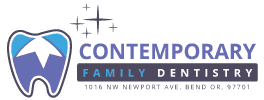Introduction
Maintaining oral health is the cornerstone of overall well-being, and preventive dentistry is the key to achieving this goal. In this comprehensive guide, we will explore advanced techniques and strategies that contribute to maintaining optimal oral health. From cutting-edge treatments to daily practices, let’s delve into the world of preventive dentistry and discover how to keep your smile radiant and healthy.
The Significance of Maintaining Oral Health
Good oral health extends beyond a beautiful smile; it is fundamental to overall health and quality of life. Neglecting oral hygiene can lead to various dental issues, affecting not only teeth and gums but also contributing to systemic health problems. Preventive dentistry emphasizes proactive measures to avoid dental problems before they arise, promoting long-term well-being.
Advanced Preventive Dentistry Techniques
1. Digital Imaging for Early Detection:
Utilizing advanced digital imaging technologies allows dentists to detect oral issues at their earliest stages. Early detection enables prompt intervention, preventing the progression of conditions like cavities and gum disease. Digital imaging technologies, such as intraoral cameras and cone beam computed tomography (CBCT), provide detailed and accurate images of the teeth and surrounding structures. This allows dentists to identify potential problems that may not be visible to the naked eye, ensuring early intervention and better treatment outcomes.
- Intraoral Cameras: These small, high-resolution cameras provide a detailed view of the teeth and gums, aiding in the early identification of potential problems. Cone Beam Computed Tomography (CBCT) is an advanced imaging technology that creates three-dimensional images of the teeth, jawbone, and surrounding structures, allowing dentists to diagnose and plan treatments for complex dental issues accurately. By combining the information from intraoral cameras and CBCT scans, dentists can provide more precise and personalized care to their patients.
2. Fluoride Treatments for Strengthening Enamel:
Fluoride has long been recognized for its role in preventing tooth decay. Advanced fluoride treatments now offer targeted applications to strengthen enamel and protect teeth from acid attacks. These treatments are especially beneficial for individuals who are at a higher risk of developing cavities, such as those with dry mouth or a history of frequent dental decay. Additionally, fluoride treatments can also help to reduce tooth sensitivity and improve overall oral health.
- Professional Fluoride Varnishes: Applied by dental professionals, fluoride varnishes provide a concentrated and long-lasting protective barrier on the teeth. This barrier helps to prevent the formation of cavities by remineralizing the enamel and making it more resistant to acid erosion. It is a quick and painless procedure that can be done during a routine dental visit, making it convenient for patients of all ages.
3. Sealants for Pits and Fissures:
Dental sealants are thin coatings applied to the chewing surfaces of molars and premolars to prevent the accumulation of bacteria and food particles in the deep pits and fissures. These sealants act as a physical barrier, making it easier to clean the teeth and reducing the risk of cavities. They are especially beneficial for children who may have difficulty maintaining proper oral hygiene in these hard-to-reach areas. Additionally, dental sealants are a quick and painless procedure that can provide long-lasting protection against tooth decay.
- Microbial Sealants: Advanced formulations of sealants incorporate antimicrobial properties, offering enhanced protection against cavity-causing bacteria. These microbial sealants not only act as a physical barrier but also actively inhibit the growth of bacteria, reducing the risk of cavities even further.
4. Laser Dentistry for Minimally Invasive Procedures:
Laser technology has revolutionized many dental procedures, making them more precise and less invasive. In preventive dentistry, lasers are used for tasks such as gum disease treatment and cavity detection. In gum disease treatment, lasers can remove infected tissue and promote healing without the need for traditional surgery. Additionally, lasers can accurately detect cavities in their early stages, allowing for prompt treatment and prevention of further decay.
- Soft Tissue Laser Therapy: Used for gum disease prevention, soft tissue lasers provide effective and comfortable treatment with minimal bleeding. Gentle tissue laser therapy is a non-invasive procedure that targets the bacteria causing gum disease, reducing inflammation and promoting healthy gum tissue. The use of soft tissue lasers also minimizes discomfort during the treatment, making it a preferred option for patients with dental anxiety or sensitivity.
5. Genetic Testing for Oral Health Risk Assessment:
Advances in genetic testing allow for personalized risk assessments related to oral health. Understanding one’s genetic predispositions can help individuals and dentists develop targeted preventive strategies. By analyzing an individual’s genetic makeup, dentists can identify specific oral health risks that may be inherited. This knowledge enables them to tailor treatment plans and provide proactive care to mitigate potential issues. Additionally, genetic testing can also aid in the early detection of certain oral diseases, allowing for timely intervention and improved outcomes.
- Salivary DNA Tests: These tests analyze saliva for genetic markers related to susceptibility to conditions like periodontal disease and cavities. By examining the salivary DNA, dentists can gain valuable insights into an individual’s predisposition to oral health problems. This information can help them develop personalized prevention strategies and recommend targeted interventions to maintain optimal oral health.
Daily Practices for Maintaining Oral Health
1. Effective Brushing Techniques:
Maintaining oral health starts with proper brushing techniques. Use a fluoride toothpaste and a soft-bristled toothbrush, and brush for at least two minutes twice a day. Brushing should be done in gentle, circular motions to effectively remove plaque and debris from all surfaces of the teeth. Additionally, it is important to replace your toothbrush every three to four months or sooner if the bristles become frayed.
- Angled Brushing: Angle the brush at 45 degrees to the gums for effective plaque removal. This technique helps to reach the areas where plaque tends to accumulate, such as the gumline and the back of the teeth. Remember to brush gently in circular motions to avoid damaging the gums.
2. Flossing for Gum Health:
Flossing is essential for cleaning between teeth and along the gumline where a toothbrush may not reach. It helps remove plaque and food particles that can lead to gum disease. Be sure to floss at least once a day, gently sliding the floss between each tooth and making a C-shape around the tooth to reach below the gumline.
- Water Flossers: Advanced water flossers provide an alternative to traditional flossing, offering effective interdental cleaning. Water flossers use a stream of water to remove plaque and debris from between teeth and along the gumline. They can be particularly helpful for individuals with braces or other dental appliances. However, it is important to note that water flossers should not replace traditional flossing entirely, as they may not be as effective at reaching tight spaces between teeth.
3. Antimicrobial Mouthwashes:
Incorporating an antimicrobial mouthwash into your oral care routine can help reduce bacteria and promote gum health. Antimicrobial mouthwashes contain ingredients that can kill bacteria and prevent plaque buildup, which can lead to gum disease. Using mouthwash after brushing and flossing can provide an extra layer of protection for your gums and overall oral health.
- Prescription Mouthwashes: Dentists may prescribe specialized mouthwashes for individuals with specific oral health concerns. These prescription mouthwashes are formulated to target specific issues such as gum inflammation, chronic bad breath, or post-surgical care. They may contain stronger antimicrobial agents or additional ingredients to address the particular needs of the patient. It is important to follow your dentist’s instructions and use these prescription mouthwashes as directed for optimal results.
Statistics on Oral Health
According to recent studies:
Dental Cavities: Over 90% of adults have had cavities in their permanent teeth.
Gum Disease: Nearly 47% of adults aged 30 years and older in the United States have some form of gum disease.
Preventive Measures: Regular brushing and flossing can reduce the risk of cavities and gum disease by up to 80%.
FAQs About Maintaining Oral Health
1. How often should I visit the dentist for preventive care?
It is recommended to visit the dentist at least twice a year for routine check-ups and cleanings. Regular dental visits are important for early detection and prevention of oral health issues. These appointments also allow the dentist to provide personalized advice on maintaining optimal oral hygiene. However, individuals with specific oral health concerns may require more frequent visits.
2. Are there age-specific considerations for preventive dentistry?
No, preventive dentistry is essential at every age. From childhood to adulthood and into the senior years, maintaining oral health through preventative measures is crucial for overall well-being. Regular dental check-ups and cleanings can help detect and prevent potential dental issues before they become more serious and costly to treat. Additionally, preventive care can also help maintain a healthy smile and improve overall oral hygiene.
3. Can preventive dentistry prevent bad breath?
Yes, many preventive dentistry practices, such as regular brushing, flossing, and professional cleanings, can help prevent bad breath by reducing the bacteria that contribute to odors. In addition, maintaining good oral hygiene can also control the buildup of plaque and tartar, which are common causes of bad breath. By practicing preventive dentistry, individuals can enjoy fresher breath and better overall oral health.
4. How effective are at-home teeth whitening products for maintaining oral health?
While at-home teeth whitening products can improve the aesthetic appearance of teeth, they may not contribute significantly to overall oral health. It’s crucial to prioritize daily oral hygiene practices and professional cleanings for optimal results. At-home teeth whitening products are mainly focused on removing surface stains and brightening the teeth. However, they do not address underlying oral health issues such as gum disease or tooth decay. Therefore, it is important to consult with a dentist for a comprehensive evaluation and treatment plan to maintain optimal oral health.
The Future of Preventive Dentistry
The landscape of preventive dentistry continues to evolve with ongoing research and technological advancements. Innovations such as dental sealants and fluoride treatments have shown promising results in preventing cavities. Additionally, advances in tele-dentistry have made it easier for individuals to access preventive dental care remotely, improving overall oral health outcomes. Future developments may include:
Smart Toothbrushes: Incorporating artificial intelligence for real-time feedback on brushing habits. This technology can help individuals improve their brushing technique and ensure more effective plaque removal. Additionally, advancements in preventive dentistry may also involve the use of genetic testing to identify individuals who are at a higher risk for developing gum disease, allowing for targeted preventive measures and personalized treatment plans.
Nano-technology in Oral Care Products: Utilizing nanoparticles for targeted delivery of preventive agents to specific areas of the mouth. These advancements could revolutionize oral care by providing personalized and efficient preventive measures, ultimately improving overall dental health. Additionally, the integration of tele-dentistry and remote monitoring systems may allow for more accessible and convenient preventive dental care, especially for individuals in remote areas or with limited access to dental professionals.
Tele-dentistry: Increasing access to preventive care through virtual consultations and monitoring. These advancements have the potential to revolutionize the way we approach preventive dentistry by providing personalized and convenient solutions for patients. Additionally, they may help identify early signs of dental issues and address them before they become more serious problems.
Conclusion
Maintaining oral health is a lifelong commitment that involves a combination of advanced dental techniques and daily practices. By staying informed about the latest preventive dentistry methods, incorporating effective oral care habits, and seeking regular professional dental care, individuals can enjoy a radiant smile and optimal overall health. Prioritizing preventive dentistry is an investment in a healthier, happier future. Regular dental check-ups and cleanings are essential for maintaining oral health, as they allow dentists to detect and address any potential issues before they become more serious. Additionally, practicing good oral hygiene at home, such as brushing twice a day and flossing daily, can greatly contribute to preventing dental problems in the long run. By taking these proactive steps, individuals can ensure that their oral health remains in excellent condition throughout their lives.



